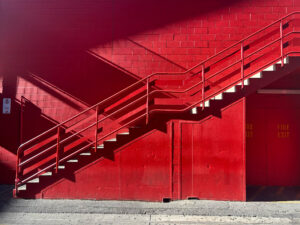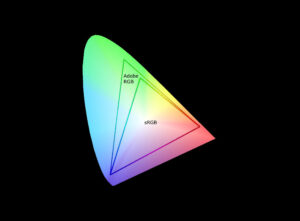When I shot this, it was such a gloomy day in Washington State, a few hours outside Seattle. I shot colour, but I might as well have used black and white. It raises the question, does black and white have a place in landscape photography? Shouldn’t all landscapes be about the natural colours? A lot of Ken Rockwell’s reviews feature stunning landscape photos shot in full colour, and he makes a point of sharing out of camera JPEGs so doesn’t do a lot of editing.
Black-and-white photography has long been a source of intrigue and debate among photographers and enthusiasts alike. It stands as a departure from the vibrant world of colour, offering a unique perspective on landscapes and nature. In this article, we explore the nuanced arguments for and against black-and-white landscape photography.
Embracing Subtlety and Emotion
Black-and-white photography is often praised for its subtlety and interpretive nature. Unlike colour photography, monochrome images are not direct renditions of their subjects; instead, they abstract reality, representing colours in shades of grey, known as grayscale. This shift from the literal to the abstract can infuse the image with a heightened emotional resonance, adding depth and complexity to the subject matter.
Moreover, monochrome photography excels in capturing landscapes and the natural world. By eschewing colour, it emphasizes the interplay of light and shadow, texture, and contrast, thus fostering a thought-provoking atmosphere. While colour photography is undeniably powerful in conveying mood and atmosphere, black-and-white images offer a timeless, expressive alternative.
Stepping Out of Your Comfort Zone
One compelling reason for photographers to explore black-and-white is the creative challenge it presents. Stepping out of one’s comfort zone can lead to growth and development in photography. When working in black and white, photographers shift their focus from the colours of the scene to elements like texture, shape, line, and the interplay between light and shadow. This change in perspective can sharpen their photography skills and expand their artistic horizons.
Enhancing Composition
Colour can sometimes become a crutch for photographers, masking weak compositions with vibrant hues. In contrast, black-and-white photography forces photographers to rely on strong foundations such as composition, framing, and subject matter. By removing colour distractions, it encourages a more meticulous approach to composition, ultimately resulting in more powerful and compelling images.
Expanding the Play of Light
One notable advantage of black-and-white photography is its versatility in less-than-ideal lighting conditions. Colour photography often thrives during the “golden hour” or at dusk when natural light is at its most captivating. In contrast, black and white extends the usable hours for landscape photography, emphasizing composition over the quality of light. While light remains crucial, black-and-white photography can thrive in harsher, daylight conditions when the subject is well chosen.
Long Exposure Mastery
Black-and-white long exposure photography has gained prominence thanks to the availability of neutral density filters and digital camera advancements. This genre showcases the mesmerizing beauty of motion and time in monochrome. Furthermore, black-and-white is arguably the ideal canvas for High Dynamic Range (HDR) photography, where multiple exposures are blended to capture an extensive range of tones.
Ansel Adams’ Legacy
Ansel Adams, renowned for his black-and-white landscape photography, serves as an enduring inspiration. His monochromatic masterpieces demonstrate the captivating potential of black and white in capturing the grandeur of landscapes. If Adams’ images continue to captivate us, why not explore the medium more frequently?
Debunking Misconceptions
Critics sometimes argue that black-and-white photography is inherently depressing. However, this perception primarily stems from the photographer’s stylistic choices rather than the medium itself. A colour photograph can be equally somber if composed and edited in a similar tone. Therefore, the atmosphere of the landscape, not the absence of colour, dictates the emotional impact of an image.
Seeing Beyond Colour
The notion that black and white is unsuitable because most people see in colour is unfounded. This argument disregards the visually impaired, who, too, can be photographers. Black-and-white photography is a form of artistic expression, accessible to all, regardless of their ability to perceive colours.
A Limitation or a Choice?
Some claim that if colour had been available from the outset of photography’s development, black and white would never have existed as an option. However, this view overlooks the enduring appeal of monochrome photography, which extends far beyond historical limitations. Black and white remains a deliberate artistic choice rather than a restriction.
Beyond Colour: The Essence of Photography
I think it is important to recognise that a good landscape photo transcends colours alone. It is a harmonious blend of an intriguing subject, meticulous composition, and an overall aesthetic appeal. If a black-and-white conversion renders a photograph less impressive, it may be a sign that the image relied too heavily on colour and failed to harness the deeper elements that define great photography. Ouch.
Black-and-white landscape photography is a realm where artistry meets technical skill, challenging photographers to see the world differently and create evocative images that stand the test of time. While colour photography undeniably holds its own allure, the world of monochrome offers a unique avenue for artistic expression, inviting photographers to explore its rich possibilities and dispel common misconceptions about its limitations. Would love to get your feedback.







































































